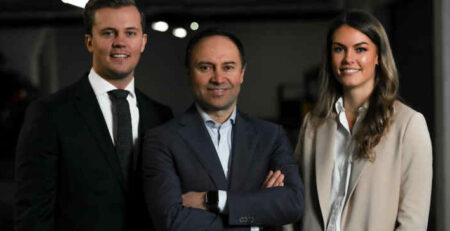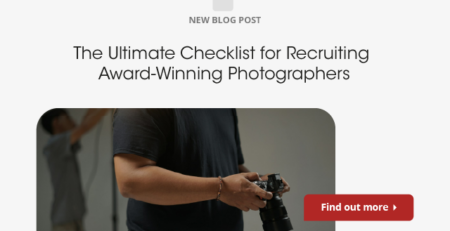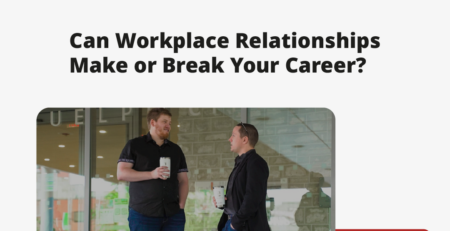The Creative’s Guide to Corporate Jargon
What does it mean to synergistically administrate holistic action items? Or objectively redefine cross-platform experiences? Just what is mind share, and can you leverage it?
All of the above phrases are examples of corporate jargon. They originally stem from real ideas and retain the sound of words but are frustratingly devoid of meaning. Overusing jargon often makes speech opaque, confusing, or even incoherent.
Most industries face a jargon overdependence problem. Design thinking and related approaches have made this a unique problem for creatives, especially when explaining ideas and products to non-creative stakeholders.
One of the most annoying things about jargon is that some of it is useful. This guide is for creatives and anyone interested in communicating with them effectively. Read through to find out how to determine what terms are merely business buzzwords and which ones are actually useful.
Where Does Jargon Come From? Unraveling the Origins of Corporate Speak
For most people, jobs are worlds unto themselves. No one will understand the ins and outs of a profession like the people who work in it or have at some point in the past.
Naturally, this creates networks of people who are in the know. That’s fine when you want to talk shop, exchange ideas, or learn new skills. But it also encourages the rise of insider language that can quickly become jargon.
Jargon is any kind of term that is understood by people with specialized knowledge of a topic but difficult to understand for anyone else. If you’re a doctor or a scientist, there’s tons of scientific jargon that a layperson is unlikely to understand.
Most business jargon seems to lack the niche meaning that makes highly technical jargon useful. For example, the word ‘synergy’ doesn’t appear to name something practical that is impossible to explain in a better way. Synergy isn’t any more illustrative than words like teamwork or cooperation.
In the case of synergy, in particular, we know that it was coined by R. Buckminster Fuller. But it’s not always so clear how these terms get their start.

The Shortfalls of Corporate Jargon
People find jargon so annoying because it disguises meaning, especially when the truth is negative or the party speaking is simply uninformed. Including jargon makes speech vaguer.
Jargon is often a placeholder for more specific ideas and information that hasn’t been obtained yet. To return to the ever-popular ‘synergy,’ what the word means to say is that together we can be more than the sum of our parts. But in a particular business context, anyone using this word is actively avoiding talking about how everyone can be better by working together.
Another frustrating aspect of jargon is that it nearly always translates into ideas that are direct and simple to understand. Many words apply to creative work, but when explaining creative thinking to other people who don’t know the specifics of design or what have you, relying on other jargon will only make things less clear.
Bad News & False Promises
Most of the time, nonsense business buzzwords are employed to make things sound better than they are or to make bad news sound more positive than it is. In some cases, they’re also meant to distract from a lack of information or negative developments.
Imagine a sales team making promises about how their flexible approach and cloudified infrastructure enable them to harness dynamic models and streamline data collection for more compelling engagement with a bricks and clicks strategy. They haven’t committed the worst of jargon sins here. What they really mean is that they can build a more efficient way to gather data for marketing campaigns that will bring more customers both online and in-store, they’re just explaining it in a convoluted way.
But that’s not the worst implication of jargon-laden speeches. Take the same imaginary sales team and put them in a situation where they’ve been hired to gather data for marketing campaigns and deliver on the results as promised. If they tell the client the long-term high-impact of their resource-maximizing methodologies merited more investment in strategic theme areas in order to access the best-case potentialities instead of just saying they went over budget, they’re wasting everyone’s time.
Cutting to the chase won’t make the news that they need more money more palatable, necessarily, but it will get the needed work done more quickly and lead to better communication overall. Too often in the business world, people rely on gimmicks and presentation rather than honest, straightforward work.
Common Corporate Jargon With Real-World Translations
Take a look at these common creative industry catchphrases and their real meanings so you can cut down on the jargon and understand others who have a bloated vocabulary.
- Align
As in, “We need to make sure sales and marketing align with accounting to protect the bottom line.”
It just means everyone needs to have the same understanding of the situation and the same goal in mind. A similar phrase is “get on the same page.”
- Above the Fold
In design, anything above the fold is seen by the viewer without having to scroll or otherwise manipulate the page at all. The term comes from newspaper printing, where the first half of the cover page would be visible to passersby.
- Actionable
Unlike some of the other entries on this list, ‘actionable’ has a meaning that merits its use sometimes. Unfortunately, it gets overused so much that it still registers as jargon.
When something is actionable it means you can do something about it. So you would want to focus on the actionable solutions rather than abstract ones, which is a better approach than drowning in hypotheticals.
- Authentic
Something with automatic appeal.
- Boil the Ocean
To make a project or job unnecessarily difficult. The speaker wants to keep things simple and prevent wasted effort.
- Best in Class
Whatever they’re talking about is the best of its kind. Look out for this one when people are making promises – it should be automatically assumed that they’re going to give you the best possible result.
- Belt and Suspenders
Redundant design – as if you were wearing both a belt and suspenders. It could also be a positive thing. A belt and suspenders approach indicates that there are multiple protective barriers in place for a loan, for example.
- Boondoggle
A mistake.
- Brain Dump
All ideas out on the table – kind of like desperate brainstorming.
- Charette
An intense meeting meant to get complicated design work done quickly. Usually, everyone involved in a project is pulled into the same place to solve a problem.
For most creatives, charette is the king of creative industry catchphrases because it basically means high-pressure work because someone important isn’t happy with the way things are going.
- Change Agent
The cause of a change. Could be someone taking initiative or an acknowledgment that a change has a certain source or sources.
- Circle Back
We’ll finish this later.
- Collaboration
Teamwork. Look out for the word “synergy” when you hear about collaboration.
- Core Competency
What we’re best at.
- Cradle to Grave
For the entire life cycle, or as long as we’re going to need it.
- Disruptive
Indicates that something completely changes the market or breaks rules. It usually doesn’t.
- Do More With Less
Budget-friendly, or a roundabout way of saying there isn’t much money available.
- Due Diligence
To do your job.
- Empower
To center someone or something in a project or process.
- First and Foremost
A filler introductory sentence that means something is important.
- Flat
A design that doesn’t look good.
- Gating Item
Something that prevents a product or design from going to market.
- Growth Hacking
Basically just means growth, although could indicate a focus on growth.
- Guesstimate
Typically means the same as either ‘guess’ or ‘estimate.’
- Headwinds
Prospective challenges
- Horsey
An ugly design element
- Hyperlocal
Very focused on local markets or users
- Ideation
Thinking, brainstorming.
- Impact
Result or effect
- Irregardless
Regardless or irrespective
- It Is What It Is
We can’t or won’t be doing anything about this. Or, I don’t care about this.
- Iterate
As in, “Design thinking is an iterative process.”
It means it will take a lot of trial and error to get to the final result.
- Leverage
To use something as a tool in order to reach a desired result. To exploit a resource, though not always in a negative way.
- Lots of Moving Parts
There’s a lot happening here and we may or may not know all of it or to what extent it’s happening.
Could also be a pacifying phrase that means “I know this but there’s no need to explain it to you in great detail.”
- Low Hanging Fruit
The easy or obvious option.
- Magic Bullet
A miracle solution. Typically used when people want to say the solution is going to be difficult but there are no other viable options.
- Make It Pop
Make it better.
- New Normal
A new way of doing things. See: disruptive.
- On-Trend
Popular.
- Organic Growth
Often means “easy growth” but could also be used to indicate growth that happens more or less automatically as long as a prescribed procedure is followed.
- Pain Points
User problems or things people have a hard time using and understanding.
- Perfect Storm
Technically, this phrase means a highly specific scenario that seems tailor-made to wreck a project. It could also be used to exaggerate the severity of a problem to disguise a poor reaction, though.
- Pull the Trigger
As in, “Dan gave the go-ahead to pull the trigger on that project.”
It just means you can go through with something.
- Reach Out
Call, email, or otherwise initiate contact with another person.
- Reinvent the Wheel
Create a solution that already exists. Similar use to ‘boil the ocean’ although not precisely the same.
- Resource Intensive
Expensive.
- Robust
Well-made or effective. Sometimes people describe things they really like as ‘robust’ for quick emphasis.
- Scalability
We can expand this project if it’s successful.
- Secret Sauce
Unique or proprietary tactics or ideas.
- Silver Bullet
See: magic bullet.
- Stopgap
Temporary
- Table the Conversation
Discuss again later. Similar to “circle back.”
- Take It To The Next Level
Make something better.
- Tee Up
Get it ready to execute. Often paired with “pull the trigger.”
- Test the Water
Go through some preliminary practice or investigation.
- Touch Base
To talk or discuss. Frequently heard and seen alongside “reach out.”
- Trim the Fat
Get rid of unneeded things.
- War Room
An office or meeting room. Usually said by someone who is overly enthusiastic about their work or a given project.
Exclusionary Corporate Jargon
Corporate jargon and creative industry catchphrases operate on the assumption that the recipient is experienced enough to be able to translate them. While this can bolster in-crowds, it can also function as exclusionary language. You’ve likely come across someone who utters business buzzwords as a kind of badge of honor, as if to prove that they have work experience in the professional world.
The whole idea of in-groups implies the idea of outgroups, which may indeed be necessary as part of the defining infrastructure that determines who is within the group and who is left out. In some sense, this is the desired outcome for people who depend on lots of business buzzwords and creative industry catchphrases, although it may not be explicitly realized as such.
Acronyms and other shorthand can be useful within an industry or a single business. But there’s also a risk that overreliance on such methods could create a large vocabulary of terms that people have to know to work as part of the team. Doling out company or industry-specific dictionaries is likely to be a deterrent for people who are just coming on board.
How to Avoid Corporate Jargon
Whether it’s a business buzzword like synergy or a creative industry catchphrase like make it pop, language that is removed from its real meaning is more likely to frustrate and confuse. Rather than obfuscate the true meaning and intent of your words, striving to be direct reduces potential issues and also demonstrates that you stand behind what you’re saying.
Even when the news isn’t good, coming right out and saying it is better than drawing it out or trying to hide the cause of the bad news with arbitrary jargon.
Sometimes when the meaning of a phrase or sentence isn’t clear, people will be too distracted, scared, or nervous about asking for clarification. In that case, business buzzwords will actively create inefficiency when they’re intended to do the exact opposite.
To reduce the prevalence of creative industry catchphrases and build better communication around the office, teams should strive to eliminate words, acronyms, and phrases that are not readily understandable. Although they may sound like they have a clarifying effect, even illustrative metaphorical statements like “boiling the ocean” aren’t always going to help make things clearer.
If you have to explain or translate your words, that’s a clear indication that you aren’t being understood. Either the subject matter is too technical or the wording is over fluffy and filled with jargon.
Sometimes industry-wide shorthand becomes the go-to word for a certain thing or idea. In that case, there’s no need to try and revert to an old way of describing things. But if it’s for a small group of people and not widely recognized, leave it out of your work vocabulary.
Try to make sure that the phrases, metaphors, and examples you use are rooted in reality and the words’ original meanings. Sometimes people like to make comparisons to the most popular technology, like computers for example. But comparing business strategy or projects to a computer isn’t going to help shed any light if that subject matter is unrelated.
As with most things in the business world, the proof of effective language bears itself out in the results. Better communication helps everyone understand ideas more quickly and thoroughly. If miscommunication is running rampant and causing slowdowns, you might need to reexamine the use of jargon on your teams.

Conclusion:
Removing buzzwords and jargon from the workplace not only helps build better communication among employees but also helps everyone realize the real structure of things and problem-solve more effectively.
Aiming for synergy when you really need to be talking about teamwork will leave people scratching their heads or ignoring topics that could prove instructive and helpful otherwise. Monitoring language strictly will make the workplace feel tense, but luckily you can avoid jargon effectively without having to implement anything so restrictive.
In today’s competitive market, finding the right creative and marketing expert can be a challenge. But with icreatives, you’re in experienced hands. With 37 years in staffing and a track record of matching more than 10,000 employees to over 1,000 companies worldwide, we know how to connect you with the best. Plus, you only pay if you hire—there’s no risk, only results.
Ready to find your perfect creative or marketing expert? HIRE WITH ICREATIVES today!












